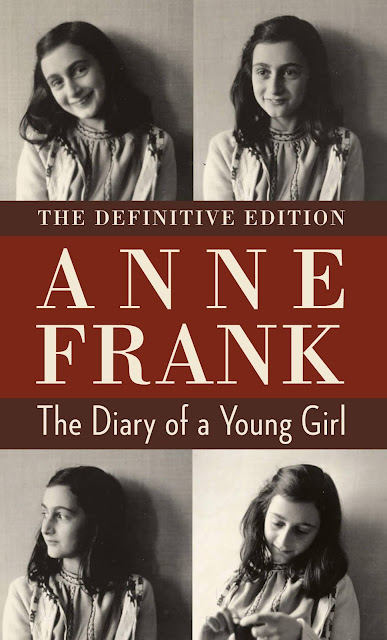In the early part of 1944, Anne Frank decided to rewrite her diary as an autobiography. She had been writing for two years. Her parents had given her a red-and-white-checkered diary as a 13th birthday present and it was just a few weeks later that her sister, Margot, received a notice to report for a forced labor camp.
The family went into hiding the next day. They moved into rooms above the business office of Otto Frank, Anne’s father. This always seemed to me to be a dangerous place to hide as it seemed an obvious place to look for the family. They also brought Otto’s business partner his wife and son, and a dentist.
Anne recorded her daily thoughts in the diary which she nicknamed “Kitty” and when she had filled it she used a black-covered exercise book. That had been brought by some non-Jewish friends who gave food and supplies to the families in hiding.
On March 28, 1944, they were listening on a contraband radio and heard a broadcast by the Dutch Government in Exile (from London). The Education Minister encouraged ordinary Dutch citizens living under the Nazi occupation to preserve documents for future generations. The next day Anne wrote in her diary:
“Of course, they all made a rush at my diary immediately. Just imagine how interesting it would be if I were to publish a romance of the ‘Secret Annex,’ the title alone would be enough to make people think it was a detective story. But, seriously, it would be quite funny 10 years after the war if people were told how we Jews lived and what we ate and talked about here.”
I always after I read her published diary that she was a very polished teen writer. I didn't know that she went back through two years of entries and rewrote them. She even gave pseudonyms to her family and the others in the Secret Annex.
She made plans to write after the war a memoir called Het Achterhuis (“the house behind,” or “the annex”) and would use the diary as its basis. She wrote that “I know that I can write, a couple of my stories are good, my descriptions of the ‘Secret Annex’ are humorous, there’s a lot in my diary that speaks, but whether I have real talent remains to be seen.”
Anne wanted to become a published writer, either as a journalist or novelist. She had her doubts that she was a good enough writer. "... sometimes I very much doubt whether anyone in the future will be interested in all my tosh. ‘The Unbosomings of an Ugly Duckling’ will be the title of all this nonsense.”
In the spring and summer of 1944, she wrote more than 300 pages of loose paper with her revised work and was still working on it when the Nazis raided the secret annex in August of 1944.
Everyone was sent to concentration camps. Anne probably died of typhus in Bergen-Belsen concentration camp in 1945. Of the eight members of the secret annex, only Anne’s father, Otto Frank, survived.
Miep Gies was one of the people who helped those hiding in the Secret Annex. Gies found Anne’s writing and kept it in her desk, hoping to return it to Anne one day. When she learned that Anne had died she passed it on to Otto, who further edited it and published Anne’s story in 1947.
I read the diary when I was 13 and only recently reread The Diary of a Young Girl: The Definitive Edition which was published 50 years after the original edition. This new edition has diary entries restored that were omitted from the original edition. It comes to a significant thirty percent more material. The restored entries that her father had edited out are ones that perhaps embarrassed him and made Anne seem "purer." But after all, she was a teenage girl who wrote about her sexuality, argued with her parents and tipped between the little girl and young woman.
(A revised version of this post and more thoughts about Anne are at https://paradelle.wordpress.com/tag/anne-frank/)

No comments:
Post a Comment